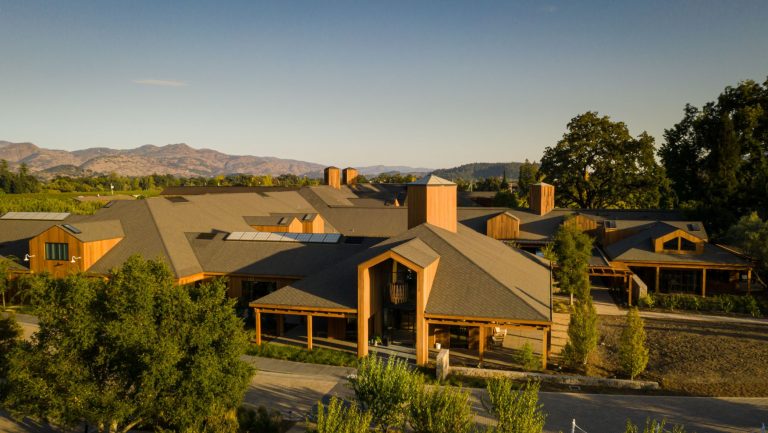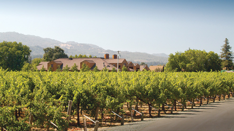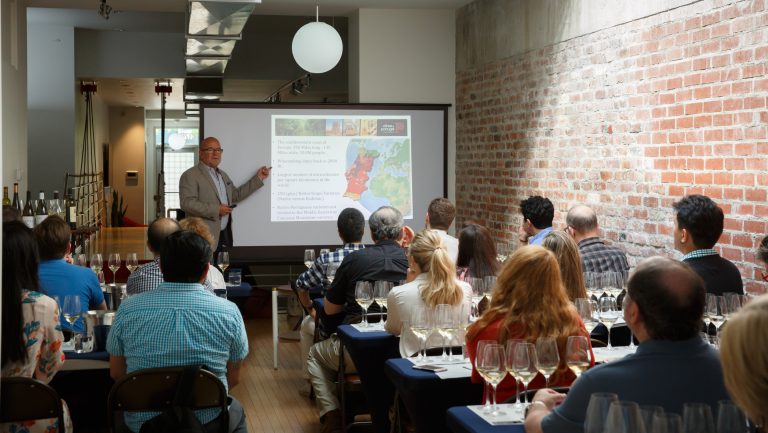This advertising content was produced in collaboration with our sponsor Cakebread Cellars; it does not necessarily reflect the views of SevenFifty Daily’s editorial team. For more information, please refer to our ethics guidelines.
Cakebread Cellars has long been celebrated as a classic and pioneering Napa Valley producer, but there’s more to the winery than the renowned Chardonnays and Cabernet Sauvignons that its reputation has been built on. The family-owned winery, located in Rutherford, was founded in 1973 and is now helmed by the second generation of Cakebreads. They possess 1,617 acres of estate vineyard land, which gives them a high degree of control over the quality of fruit that goes into their wines.
With an inspiring family story, a focus on innovation as well as sustainable winemaking practices, and an extensive, quality-focused portfolio, Cakebread has positioned itself as a brand that can not only enhance but diversify today’s wine programs. Here are five facts that may surprise you about Cakebread Cellars.
1. Cakebread Cellars is a family business
Founded in 1973 by the husband-and-wife team of Jack and Dolores Cakebread, the winery carries on the family tradition nearly five decades later. Jack and Dolores are very much involved in the business to this day—he is the chairman emeritus, and she still oversees the garden and inspires the culinary program—while their two sons, Dennis and Bruce, are now co-owners and board members; Dennis is the chairman.

Don’t miss the latest drinks industry news and insights. Sign up for our award-winning newsletters and get insider intel, resources, and trends delivered to your inbox every week.
While several multigenerational Napa Valley wineries have made headlines in recent years for selling to large corporations, Mike Jaeger, the president and CEO of Cakebread Cellars, insists that that’s absolutely not in the cards for Cakebread. “First and foremost,” he says, “the priority is to remain a family-owned winery. There’s 100 percent alignment on that—no division among the family.”
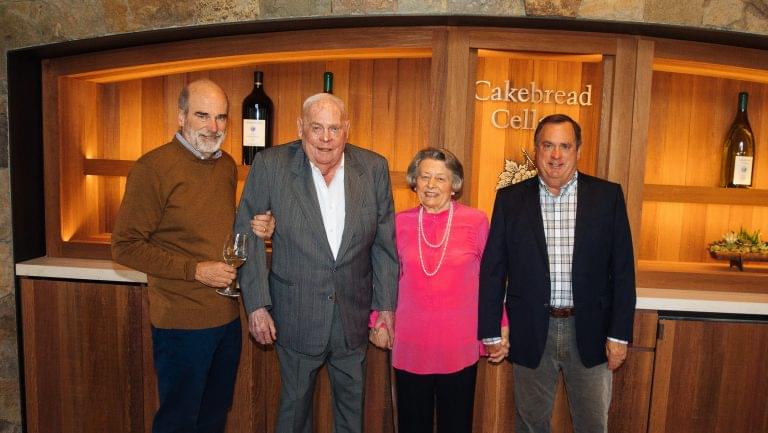
That’s a major selling point for a beverage program, says Aviram Turgeman, the beverage director of Nice Matin in New York City. “The winery is a pioneer in the Napa Valley and is still family owned,” says Turgeman. “There’s a story to be told. The fact that the winery is a family business says a lot in this day and age of acquisitions in the beverage world.”
2. Cakebread has extensive estate vineyard holdings throughout Napa Valley and the North Coast
Grapes for Cakebread’s wines come primarily from an extensive portfolio of estate vineyards. Throughout the winery’s 15 sites, there are 584 acres under vine, across all of Napa Valley—from the southern region of Carneros to Calistoga at the valley’s northern end—and beyond. Cakebread also farms two vineyards on the North Coast in Anderson Valley to produce its Two Creeks Pinot Noir.
“It’s this amazing empire of vineyards,” says Lise Asimont, Cakebread’s director of vineyard operations. “The sites are quite different—the aspect, topography, and mesoclimates are all so varied.” She adds that the distinctions are dramatic even between vineyards within the same region, like Carneros, where Cakebread has four sites. This allows Cakebread to finely balance varietal blends that take advantage of Napa Valley’s varied terroirs, as well as to offer a selection of single-vineyard wines.
That Cakebread owns all these California vineyard sites is a key component of quality control, ensuring that the company has total ownership over its farming practices and what ultimately ends up in the bottle. “The style and level of quality of wine we make at Cakebread is very specific and variety focused,” says Asimont. “To be able to farm our own sites for our [winemaking] programs is a tremendous luxury.”
In addition to the diversity of its vineyard sites, Cakebread’s portfolio features wines made with an array of grape varieties. Cakebread has 12 varieties planted throughout its vineyards, from classic Napa Valley grapes like Cabernet Sauvignon and Chardonnay to nontraditional varieties like Verdejo and Grenache.
3. Cakebread Cellars combines innovation with tradition to continue enhancing quality
Cakebread does produce many of the traditional varieties that Napa Valley is known for, but the benefits it offers buyers go beyond the bottles in its portfolio. Sandy Block, a Master of Wine and the vice president of beverage operations at Legal Sea Foods in Boston, says there are a variety of reasons he keeps Cakebread in the wine program at Legal Sea Foods restaurants.
“Cakebread’s strengths,” he says, “are its reliability vintage to vintage, compatibility with our seafood, [and] great consumer trust and recognition.” He adds that Cakebread’s production of half-bottles is also an asset, since, as he points out, this format is “not always available for wines of this quality and reputation.” Block also emphasizes that family ownership of the brand and Cakebread’s long-term vision are important factors that have resulted in “a continuity of direction [and a] dedication to vineyard terroir expression—and finally, the production of wine in a style that complements food rather than bowls you over with extraction.”

Consistency is one of Cakebread’s top priorities, but that doesn’t mean the winery rests on its laurels. Cakebread strives to stay at the forefront of innovation. “We haven’t really changed the style over the last 45 years,” says Stephanie Jacobs, Cakebread’s winemaker. She attributes the consistency of Cakebread’s wines, in part, to the fact that the company has had just four winemakers in its history. She adds, “We’re always looking at things to maintain quality and be more sustainable.” For example, Jacobs has been experimenting with new techniques in the cellar, including using concrete eggs for fermenting Sauvignon Blanc.
On the viticulture side, Asimont employs an array of technologies, including aerial imagery and data from sophisticated weather stations. The stations can measure up to 30 different environmental variables, from temperature and humidity to wind speed and vine stress. “This web-based information is updated continuously,” Asimont says, “and is instantaneously available to our vineyard personnel so they can respond quickly to any potential problems—all the while preserving our environment for future generations.”
Finally, because Cakebread is very selective with its distribution, which is focused within the restaurant community, the brand tends to stand out in wine programs, says Jaeger. “A restaurateur has the confidence not only that the wine style and quality is consistent year in and year out,” he says, “but also that it’s not readily available [to all].”
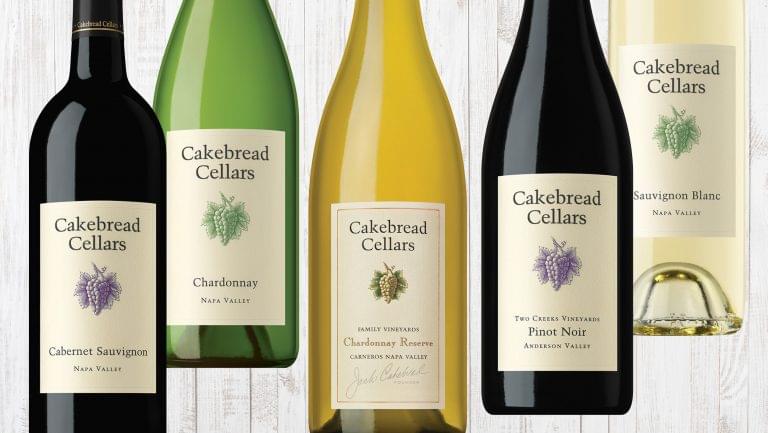
4. Cakebread Cellars is a green-certified winery
A green-certified winery, Cakebread has been an industry leader in sustainability for more than 45 years and is constantly innovating in the vineyard. “Ultimately, the family says ‘We want to make decisions that outlast us,’” says Jaeger. “Sustainability is a core value here. People walk the walk, they talk it, and it’s really ingrained into the organization.”
Cakebread farms either organically or with sustainable practices, such as using raptor perches, owl boxes, and a falconer for pesticide-free pest and rodent control. The vineyards are irrigated with recycled water. Cakebread has also tested a biofiltration water system that can reduce the use of energy by 95 percent and improve wastewater quality. “We’re trying to make sure that we’re looking at all of our vineyards in terms of ecosystem management and understand that every input into our vineyard system has a lasting and rejuvenating effect,” says Asimont, who is also researching carbon sequestration and carbon farming, which reduce greenhouse gas emissions and are believed to be able to help mitigate climate change.
“When you have balanced vineyards and are farming them sustainably,” Asimont says, “it’s a tremendous amount of work, but it also creates a balanced system that can handle fluctuations, like temperature variations due to climate change, much better.”
5. Cakebread Cellars has a history of women in leadership.
Since Cakebread’s beginnings, the winery’s cofounder, Dolores Cakebread, has been a pioneer among women in wine. She led the culinary program for many years, and her love of food and gardening inspired the food-friendly wine style for which the brand is known. Of the current Cakebread team, five leadership positions are held by women, including winemaker Stephanie Jacobs (her predecessor, Julianne Laks, was at the helm for roughly 30 years).
“Dolores ensured women were at the forefront of the business in the history of the company,” says Jacobs. “But I don’t necessarily see gender defining success. It’s always been based on talent and results and relationships.” Says Jaeger, “Our dedication to quality doesn’t stop with our wines, it also applies to the people we hire. We want the best person for the job, regardless of gender.”
Looking to the Future
With continued innovation in winemaking, sustainability, and hospitality, Cakebread Cellars will continue to captivate customers for generations to come, balancing the wine style and consistency for which it is known with further advancements to meet the changing times.

Dispatch
Sign up for our award-winning newsletter
Don’t miss the latest drinks industry news and insights—delivered to your inbox every week.


